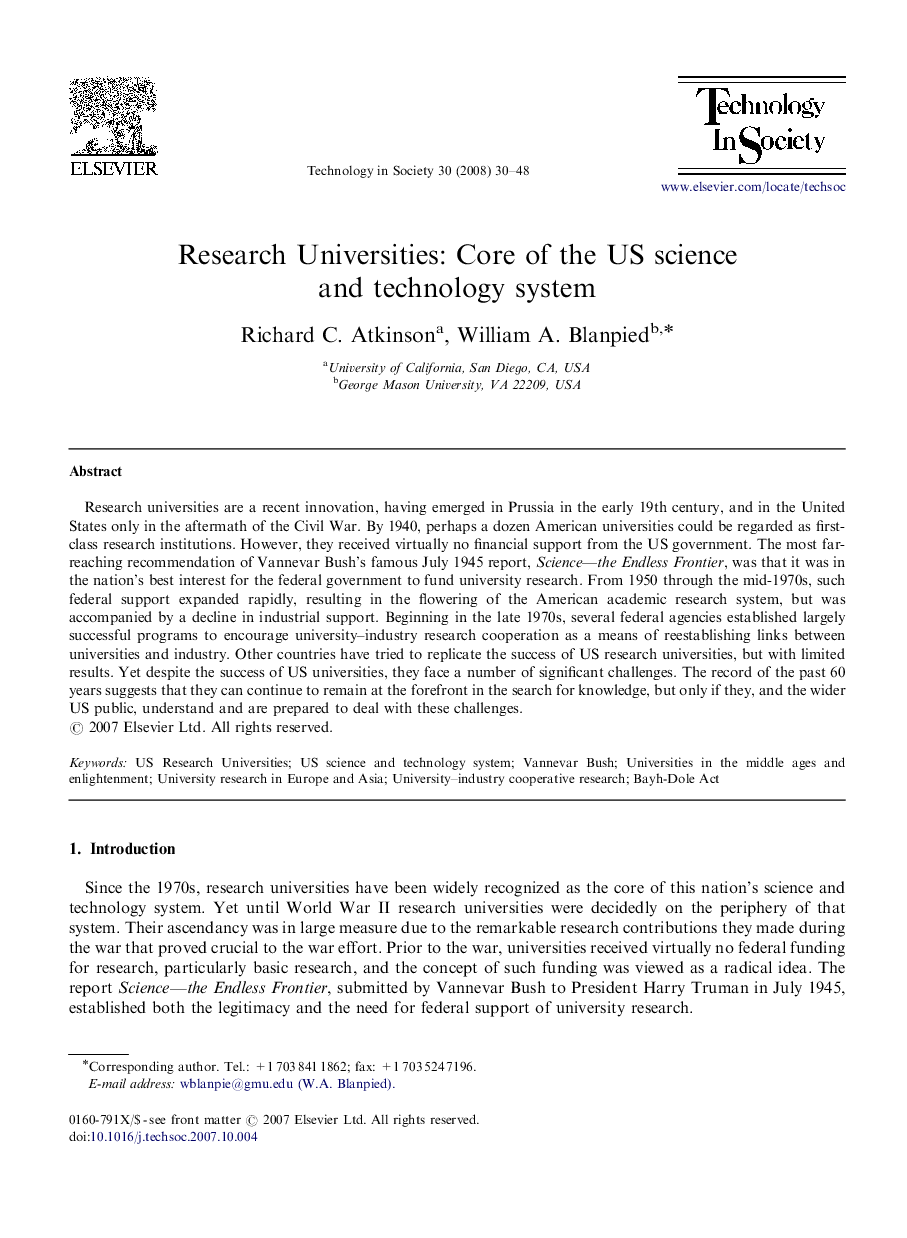| Article ID | Journal | Published Year | Pages | File Type |
|---|---|---|---|---|
| 375439 | Technology in Society | 2008 | 19 Pages |
Research universities are a recent innovation, having emerged in Prussia in the early 19th century, and in the United States only in the aftermath of the Civil War. By 1940, perhaps a dozen American universities could be regarded as first-class research institutions. However, they received virtually no financial support from the US government. The most far-reaching recommendation of Vannevar Bush's famous July 1945 report, Science—the Endless Frontier, was that it was in the nation's best interest for the federal government to fund university research. From 1950 through the mid-1970s, such federal support expanded rapidly, resulting in the flowering of the American academic research system, but was accompanied by a decline in industrial support. Beginning in the late 1970s, several federal agencies established largely successful programs to encourage university–industry research cooperation as a means of reestablishing links between universities and industry. Other countries have tried to replicate the success of US research universities, but with limited results. Yet despite the success of US universities, they face a number of significant challenges. The record of the past 60 years suggests that they can continue to remain at the forefront in the search for knowledge, but only if they, and the wider US public, understand and are prepared to deal with these challenges.
